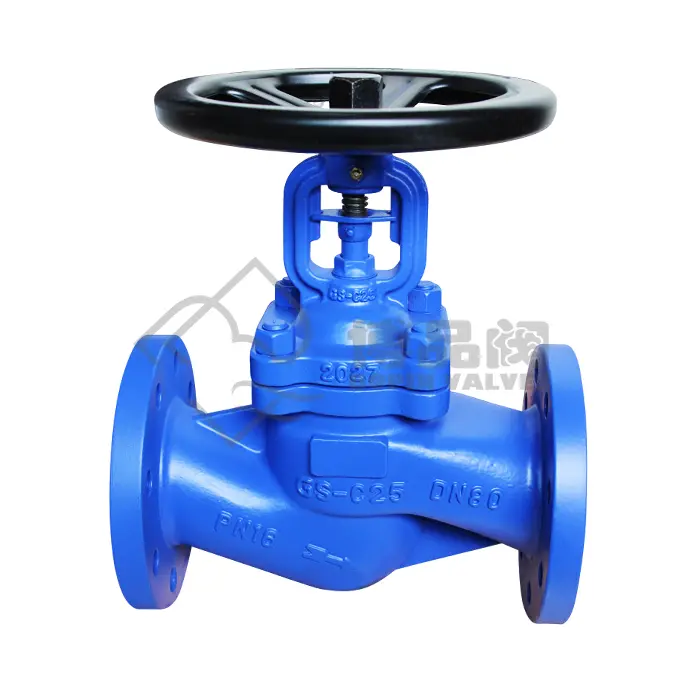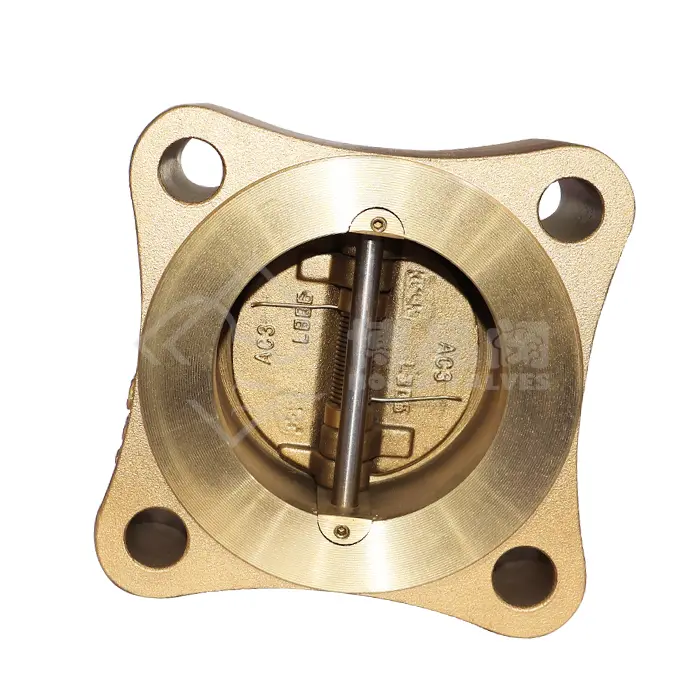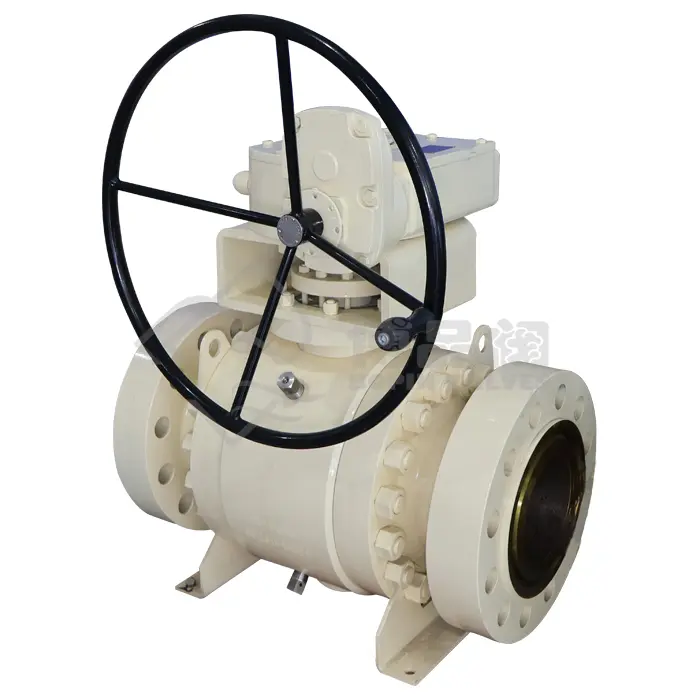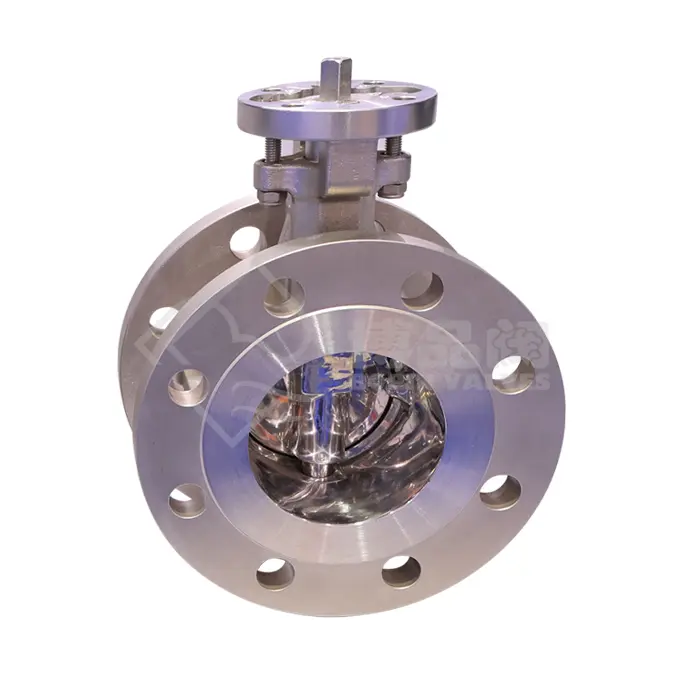0102030405
Flange End Stainless Steel Double Offset Soft Sealed High Performance Butterfly Valve
Design Principles
1. The double offset (also known as “high performance”) configuration incorporates two distinct shaft offsets:
First Offset – The shaft is offset from the disc centerline, reducing friction between the disc and seat during operation.
Second Offset – The shaft is further offset from the centerline of the valve body, ensuring the disc moves away from the seat quickly when opening, minimizing wear.
This geometry offers:
Reduced sealing surface contact during operation.
Lower operating torque requirements.
Extended seat and disc life.
First Offset – The shaft is offset from the disc centerline, reducing friction between the disc and seat during operation.
Second Offset – The shaft is further offset from the centerline of the valve body, ensuring the disc moves away from the seat quickly when opening, minimizing wear.
This geometry offers:
Reduced sealing surface contact during operation.
Lower operating torque requirements.
Extended seat and disc life.
2. Soft Seal Mechanism
The soft seal element (typically PTFE, reinforced PTFE, EPDM, NBR, or other elastomers) ensures bubble-tight shut-off in accordance with API 598 or ISO 5208 leakage standards. Soft sealing materials also provide:
Excellent sealing performance at low pressures.
Resistance to certain chemicals depending on material selection.
Quieter operation compared to metal seats.
The soft seal element (typically PTFE, reinforced PTFE, EPDM, NBR, or other elastomers) ensures bubble-tight shut-off in accordance with API 598 or ISO 5208 leakage standards. Soft sealing materials also provide:
Excellent sealing performance at low pressures.
Resistance to certain chemicals depending on material selection.
Quieter operation compared to metal seats.
3. Stainless Steel Construction
The body, disc, and shaft are manufactured from stainless steel grades such as CF8M (316 stainless steel), CF3M (low-carbon 316), or duplex stainless steel depending on service requirements. Benefits include:
High corrosion resistance in aggressive media.
Resistance to pitting and crevice corrosion.
Durability in marine, chemical, and food processing environments.
The body, disc, and shaft are manufactured from stainless steel grades such as CF8M (316 stainless steel), CF3M (low-carbon 316), or duplex stainless steel depending on service requirements. Benefits include:
High corrosion resistance in aggressive media.
Resistance to pitting and crevice corrosion.
Durability in marine, chemical, and food processing environments.
4. Flange End Connection
The flange end design conforms to standards such as ASME B16.5, EN 1092-1, or JIS B2220, ensuring:
Easy bolting to pipeline flanges.
Strong mechanical connection for higher pressures.
Better alignment and reduced leakage risk compared to wafer or lug type connections.
The flange end design conforms to standards such as ASME B16.5, EN 1092-1, or JIS B2220, ensuring:
Easy bolting to pipeline flanges.
Strong mechanical connection for higher pressures.
Better alignment and reduced leakage risk compared to wafer or lug type connections.
Technical Specifications
(Typical configuration – can vary by manufacturer)
|
Parameter |
Typical Range / Standard |
|
Design Standard |
API 609, MSS SP-68, ISO 5752 |
|
Size Range |
DN 50 – DN 1200 (2" – 48") |
|
Pressure Class |
ASME Class 150 / 300 |
|
Body Material |
CF8M, CF3M, Duplex SS |
|
Disc Material |
CF8M, Duplex SS |
|
Seat Material |
PTFE, RPTFE, EPDM, NBR |
|
Shaft Material |
17-4PH, XM-19, Duplex SS |
|
End Connection |
Flanged – ASME B16.5 or EN 1092-1 |
|
Leakage Class |
API 598 / ISO 5208 Rate A (bubble-tight) |
|
Operation |
Manual gearbox, pneumatic actuator, electric actuator |
|
Temperature Range |
–29°C to +200°C (depending on seat) |
|
Face-to-Face |
API 609 / ISO 5752 Series |
Working Principle
The valve operates on a quarter-turn principle:
Closed Position – The disc presses against the soft seat, creating a tight seal.
Opening – Rotating the shaft 90° moves the disc away from the seat, thanks to the double offset, minimizing rubbing.
Fully Open – The disc is parallel to the flow, offering minimal resistance.
The double offset ensures that the disc does not scrape against the seat except during the final degrees of closure, reducing wear and torque requirements.
Closed Position – The disc presses against the soft seat, creating a tight seal.
Opening – Rotating the shaft 90° moves the disc away from the seat, thanks to the double offset, minimizing rubbing.
Fully Open – The disc is parallel to the flow, offering minimal resistance.
The double offset ensures that the disc does not scrape against the seat except during the final degrees of closure, reducing wear and torque requirements.
Key Features & Advantages
1. High Sealing Performance
Bubble-tight shut-off capability.
Ideal for critical shut-off applications in liquid, gas, or steam service.
Bubble-tight shut-off capability.
Ideal for critical shut-off applications in liquid, gas, or steam service.
2. Lower Operating Torque
Reduced seat friction extends actuator life and lowers energy consumption.
Reduced seat friction extends actuator life and lowers energy consumption.
3. Corrosion Resistance
Stainless steel body and disc resist corrosion in saline, acidic, or alkaline environments.
Stainless steel body and disc resist corrosion in saline, acidic, or alkaline environments.
4. Durability
Extended service life due to reduced wear on sealing surfaces.
Extended service life due to reduced wear on sealing surfaces.
5. Versatile End Connection
Flange ends provide strong sealing integrity and ease of installation.
Flange ends provide strong sealing integrity and ease of installation.
6. Compliance with International Standards
Meets API, ISO, EN, and ASME requirements for design, testing, and performance.
Meets API, ISO, EN, and ASME requirements for design, testing, and performance.
Applications
1. Oil & Gas Industry
Used in onshore/offshore pipelines, process lines, and storage terminals for hydrocarbons and refined products.
Used in onshore/offshore pipelines, process lines, and storage terminals for hydrocarbons and refined products.
2. Chemical & Petrochemical
Handles corrosive chemicals, solvents, and acids with appropriate soft seat selection.
Handles corrosive chemicals, solvents, and acids with appropriate soft seat selection.
3. Water & Wastewater
Ideal for potable water, seawater desalination plants, and wastewater treatment systems.
Ideal for potable water, seawater desalination plants, and wastewater treatment systems.
4. HVAC & Power Generation
Used in cooling water loops, condenser systems, and auxiliary services in power plants.
Used in cooling water loops, condenser systems, and auxiliary services in power plants.
5. Marine & Offshore
Excellent for ballast water, fire protection systems, and seawater cooling systems.
Excellent for ballast water, fire protection systems, and seawater cooling systems.
Installation Guidelines
1. Pre-Installation Checks
Verify valve size, pressure class, and materials against specifications.
Ensure pipeline flanges match the valve’s drilling standard.
Clean pipeline to remove debris.
Verify valve size, pressure class, and materials against specifications.
Ensure pipeline flanges match the valve’s drilling standard.
Clean pipeline to remove debris.
2. Installation Procedure
Position the valve between pipeline flanges, ensuring correct flow direction if applicable.
Insert bolts and tighten in a cross pattern to ensure even gasket compression.
Confirm disc movement before fully tightening.
Position the valve between pipeline flanges, ensuring correct flow direction if applicable.
Insert bolts and tighten in a cross pattern to ensure even gasket compression.
Confirm disc movement before fully tightening.
3. Alignment
Proper alignment prevents disc interference with pipe walls and ensures long sealing life.
Proper alignment prevents disc interference with pipe walls and ensures long sealing life.
Maintenance Practices
1. Routine Inspection
Check for leaks around flange joints and seat.
Inspect actuator and gearbox for smooth operation.
Check for leaks around flange joints and seat.
Inspect actuator and gearbox for smooth operation.
2. Seat Replacement
Soft seats can be replaced in-line on many designs without removing the valve from the pipeline.
Soft seats can be replaced in-line on many designs without removing the valve from the pipeline.
3. Stem & Seal Lubrication
Lubricate periodically if recommended by manufacturer.
Lubricate periodically if recommended by manufacturer.
Standards & Testing
1. Design Standards
API 609 – Butterfly valves for general and high-performance service.
MSS SP-68 – High-pressure, high-temperature butterfly valves..
API 609 – Butterfly valves for general and high-performance service.
MSS SP-68 – High-pressure, high-temperature butterfly valves..
2.Testing Standards
API 598 – Valve inspection and testing.
ISO 5208 – Pressure testing of valves..
API 598 – Valve inspection and testing.
ISO 5208 – Pressure testing of valves..
3.Face-to-Face Dimensions
ISO 5752 or API 609 ensures interchangeability between manufacturers.
ISO 5752 or API 609 ensures interchangeability between manufacturers.
Advantages over Concentric Butterfly Valves
Better sealing under high pressure due to double offset geometry.
Lower seat wear because of minimal rubbing during operation.
Higher temperature capability with reinforced soft seals.
Greater pressure ratings – often up to ASME Class 300.
Lower seat wear because of minimal rubbing during operation.
Higher temperature capability with reinforced soft seals.
Greater pressure ratings – often up to ASME Class 300.
Limitations
Not suitable for abrasive slurries that may erode the soft seat.
Higher initial cost compared to standard concentric valves.
Requires careful material selection for specific chemicals to avoid seal degradation.
Higher initial cost compared to standard concentric valves.
Requires careful material selection for specific chemicals to avoid seal degradation.
Conclusion
The Flange End Stainless Steel Double Offset Soft Sealed High Performance Butterfly Valve represents a significant step up from conventional butterfly valves in terms of performance, durability, and sealing capability. Its combination of double offset geometry, soft sealing technology, and corrosion-resistant stainless steel construction makes it highly versatile and reliable in demanding industrial environments. From chemical plants to offshore platforms, this valve delivers long service life, reduced maintenance, and excellent flow control, making it a preferred choice for engineers seeking high performance in critical applications.



















